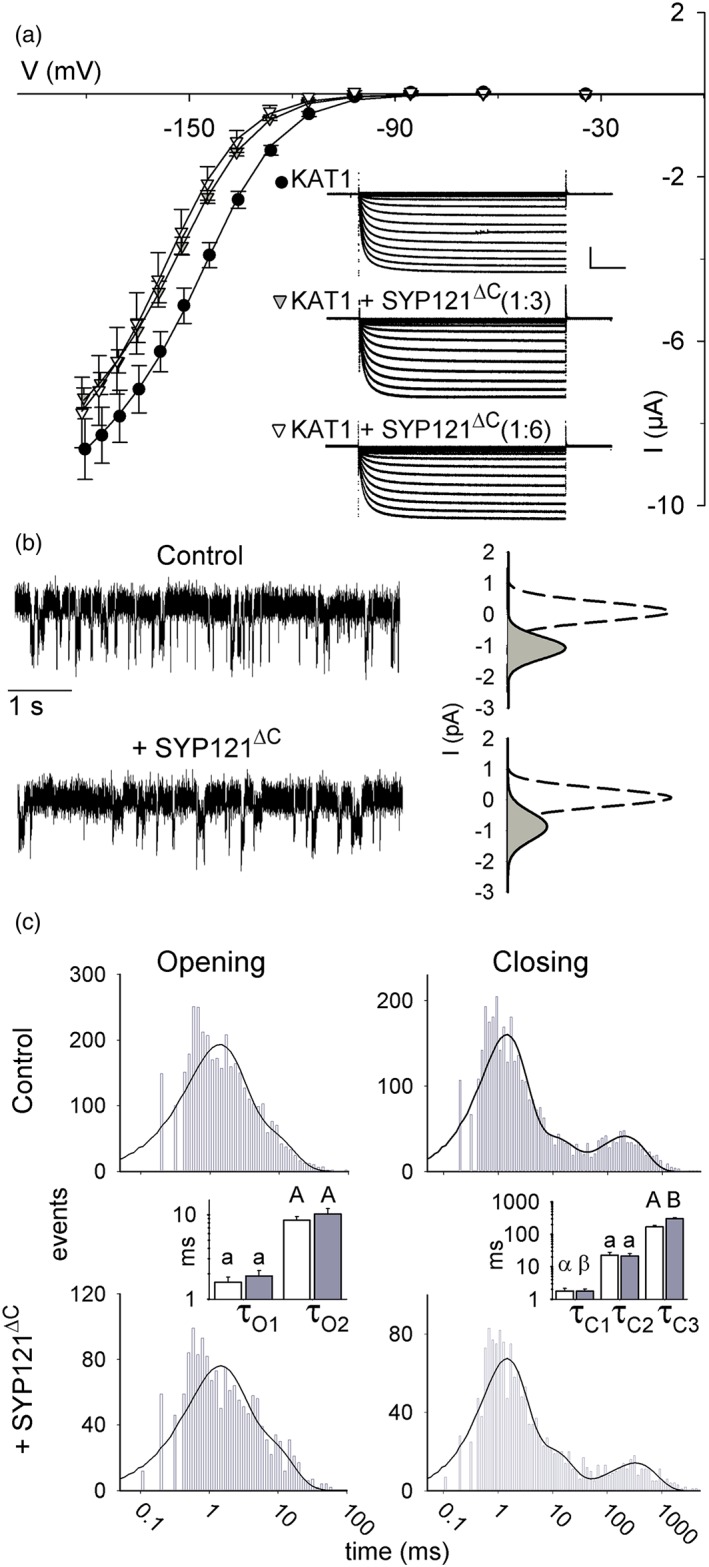Figure 3.

Eliminating the SYP121 membrane anchor recovers a subset only of KAT1 gating transitions. (a) Steady‐state current–voltage curves and representative current traces (insets) for KAT1 alone (filled circles) and co‐expressed with the cytosolic SNARE domain, SYP121ΔC (triangles; KAT1: SYP121ΔC ratios: 1:2, grey; 1:6, open). Voltage stepped from −20 mV to voltages between +20 and −180 mV. Solid curves are the result of the joint, least squares fitting to the Boltzmann function of Equation (3). Data are means ±SE (n ≥ 6). Insets: Representative current traces cross‐referenced by symbol. Scale: 2 μA (vertical), 1 s (horizontal). Corresponding Immunoblot analysis shown in Figure S1 and relative conductance curves shown in Figure S3. (b) Representative single‐channel currents recorded at −120 mV from one inside–out patch with KAT1 alone (above) and after adding SYP121ΔC to the bath (below). Fitted amplitude histograms for the open (solid lines, grey fill) and close state (dashed lines) taken from the entire 8‐min recording. Open‐state curves are scaled (multiplied) by 4 relative to the closed state for clarity. (c) Frequency histograms of KAT1 open and close durations for KAT1 alone (above) and after adding SYP121ΔC to the bath (below) plotted on logarithmic scales. Solid lines are fittings to Equation (2) to extract the dwell time constants. Bins below 1 ms (Nyquist limit) are shown but were not included in fittings. Open and closed lifetimes were fitted satisfactorily with sums of two and three exponentials, respectively. Mean dwell time constants ±SE (n = 6) for open and closed lifetimes are summarized by the bar charts (KAT1, open bars; KAT1+ SYP121ΔC, filled bars). In the absence of the SNARE membrane anchor, a significant difference ± SYP121ΔC was observed only for the longest closed dwell time constant, τC3 (see Table 1) [Colour figure can be viewed at http://wileyonlinelibrary.com]
